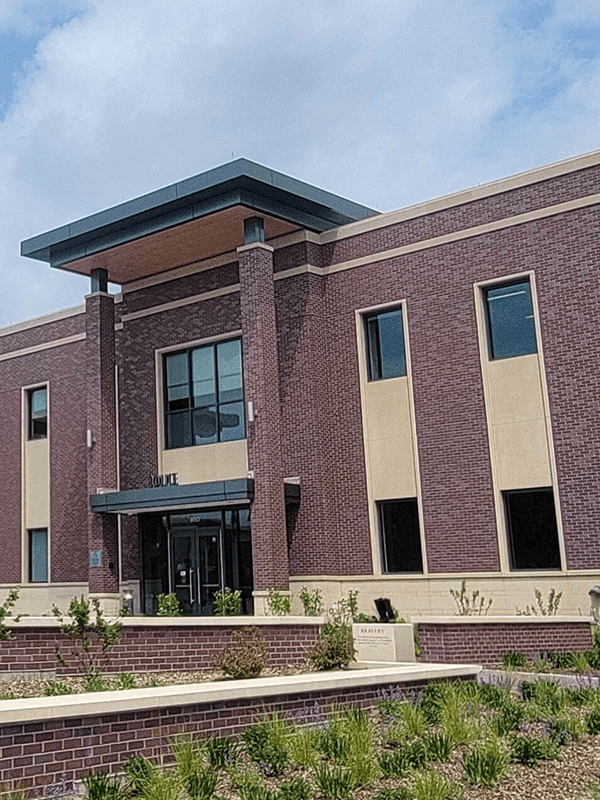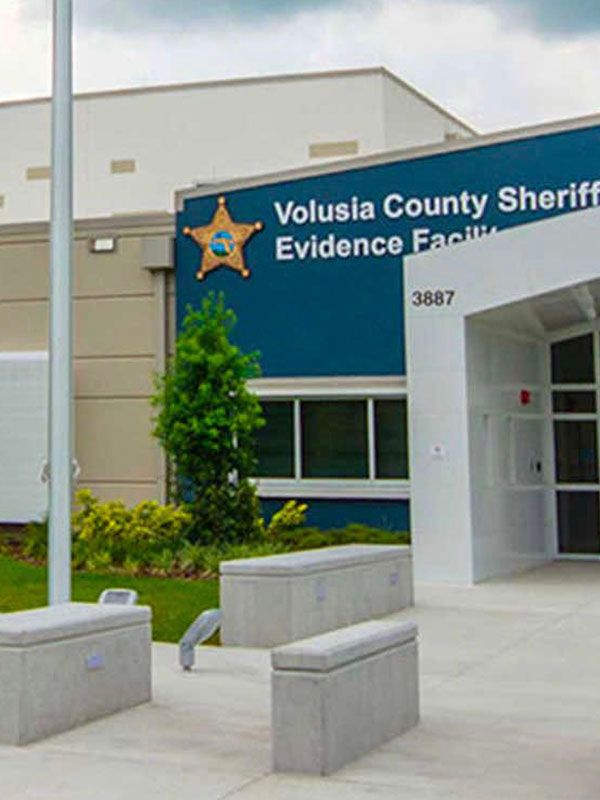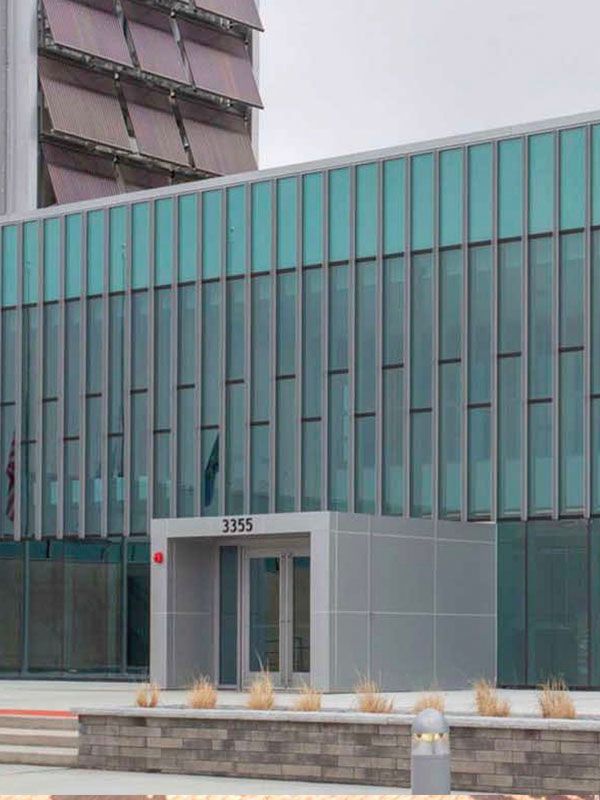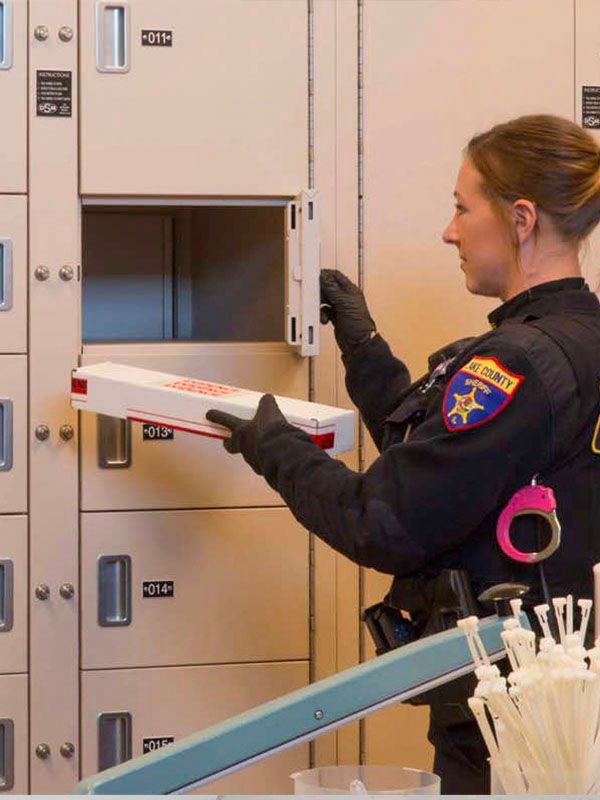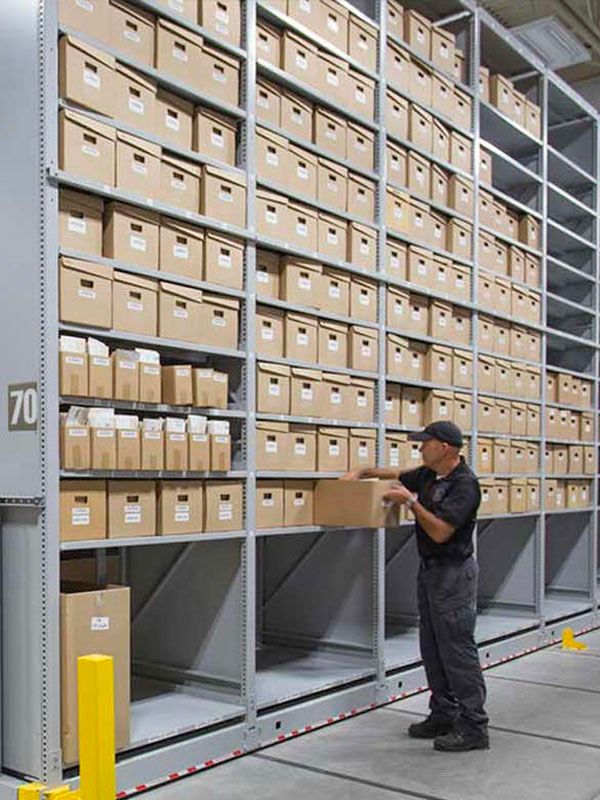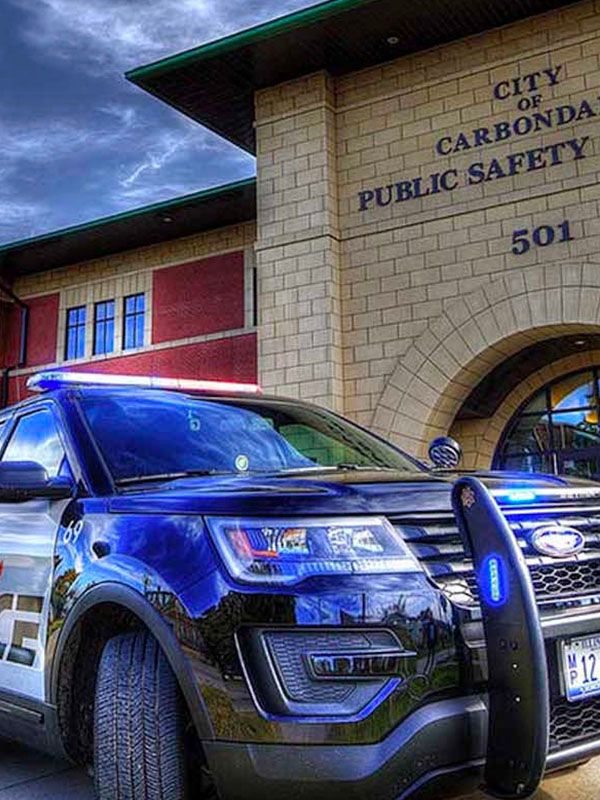Arlington Heights, Illinois
A New Police Building with a Focus on Community
This new facility was designed to foster positive community relations and provide police evidence storage to maintain the department's accreditation.
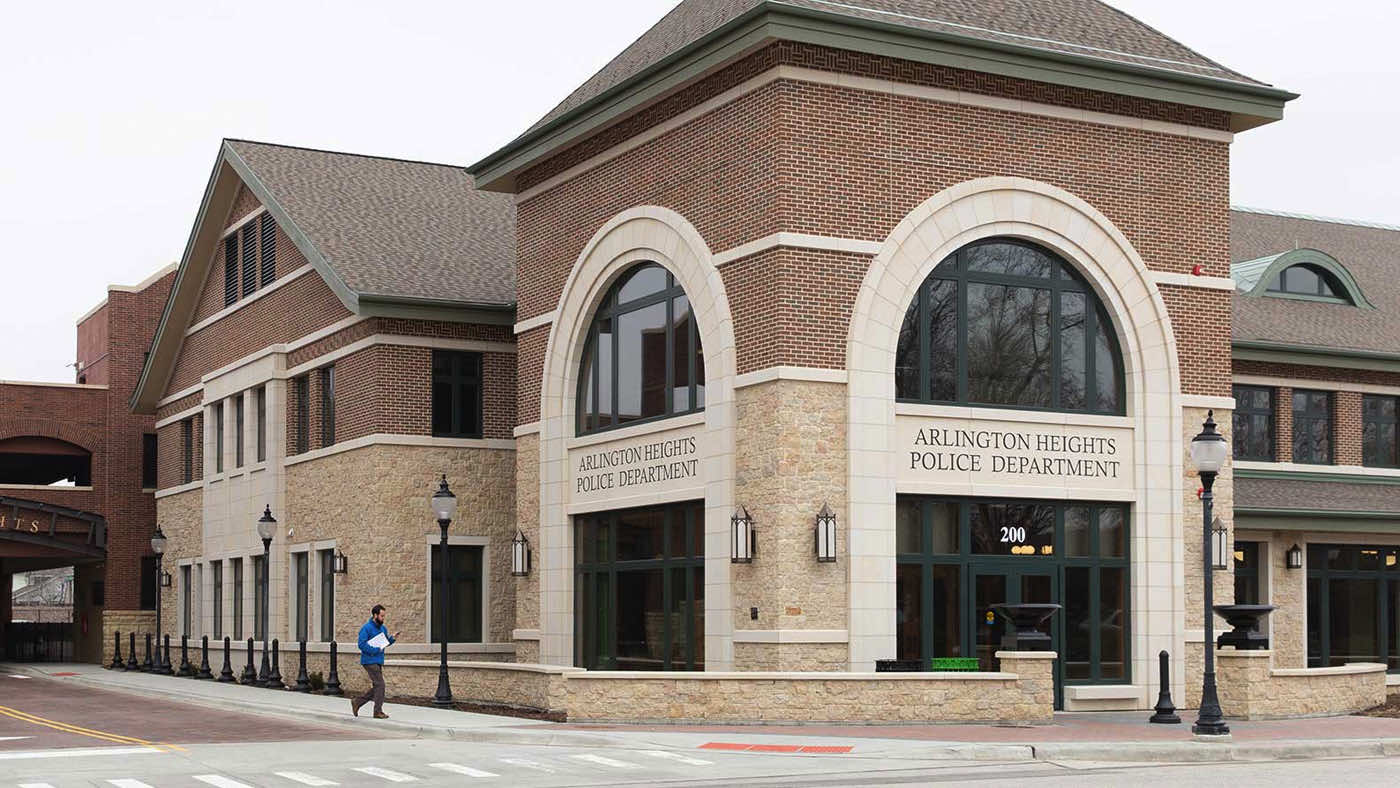
Welcoming the Community
Like many police departments throughout the United States, the Arlington Heights Police Department wanted to strengthen its relationship with the community. The department had been pursuing a number of community-oriented programming initiatives for years, and now they had the opportunity to build a physical structure that reflected this goal. They wanted a large community room to host meetings and gatherings, and they wanted public spaces to be filled with natural light to help create a pleasant, inviting atmosphere.
The building features bright and welcoming public spaces, which help balance the need for security with a feeling of openness and transparency.
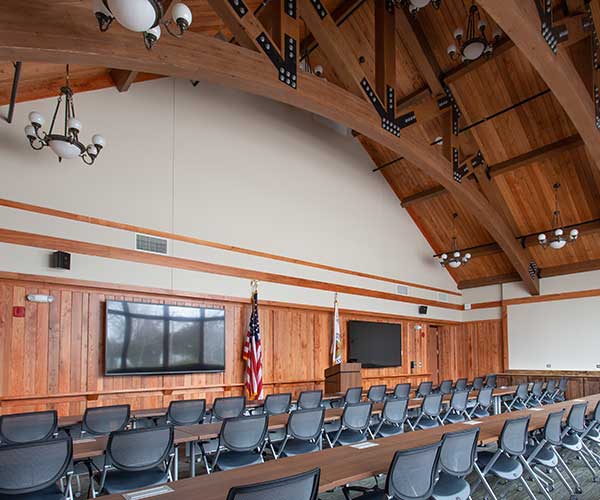
Improving Comfort & Workflow
Another design goal was to promote efficient workflows in the building’s secure areas and minimize wasted time and inconvenience for officers and staff.
“It’s all about efficiency,” said Deputy Police Chief Nicholas Pecora. “In our previous building, we had to go down to the basement, get all our gear out of the old high-school style lockers, then come upstairs to roll call, put all our stuff down while we got our assignments, then gather it all up again and head out to the garage. You needed a sherpa to get through the building.”
"Now you grab all your heavy gear on the way to your car, it’s so much better."
- Nicholas Pecora, Deputy Police Chief
The new building takes a completely new approach. The locker rooms are upstairs, so officers can get dressed and go down to the main floor for roll call. Duty bag lockers are conveniently located between the briefing room and garage. “Now you grab all your heavy gear on the way to your car,” Pecora said. “It’s so much better.”
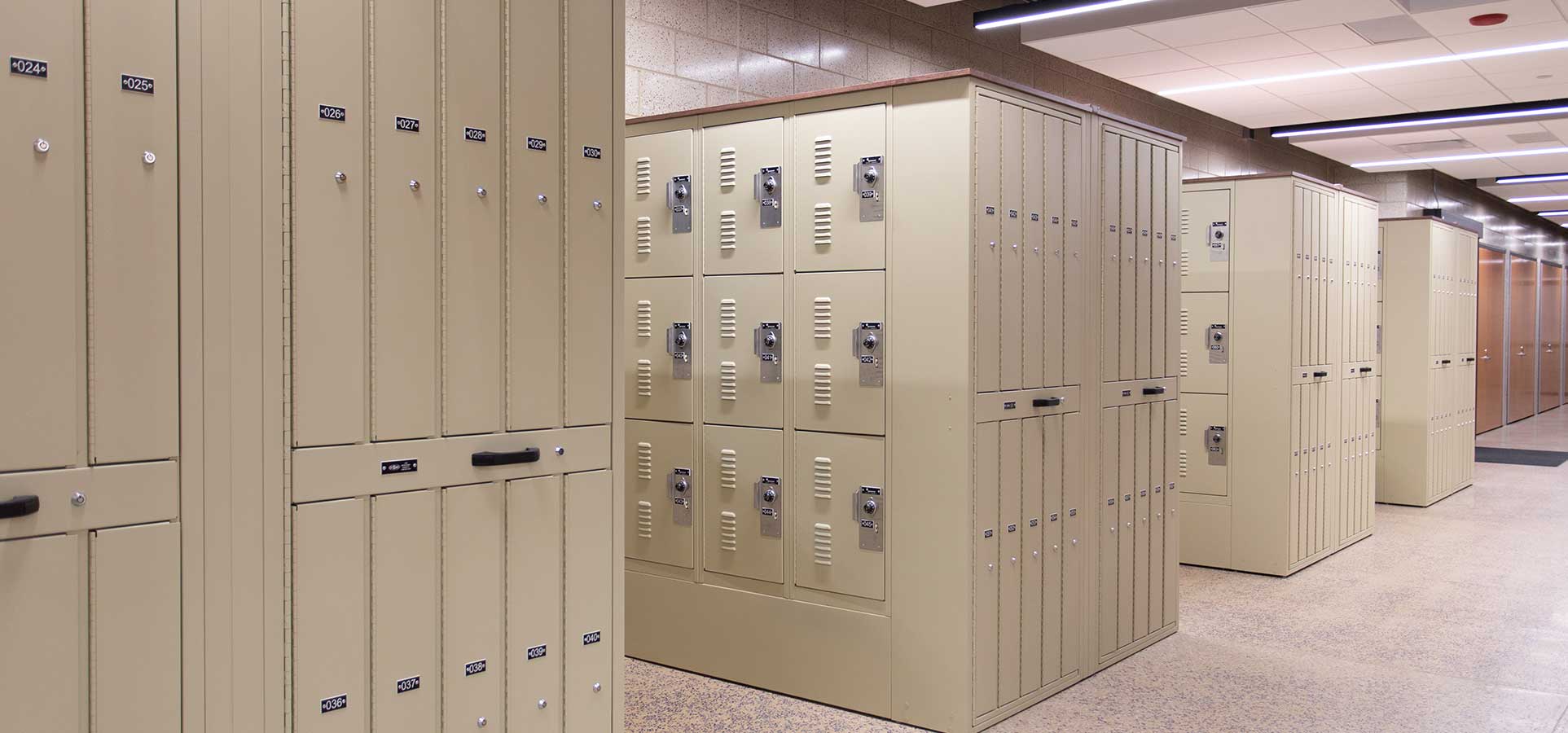
Rifles and duty bags are stored in police lockers adjacent to the garage, so officers can pick up their gear on the way to their patrol cars. “We wanted to minimize carrying heavy gear through the building,” said the deputy chief.
Turning a Tragedy Into an Asset
Like many cities across the Midwest, Arlington Heights had to cut down thousands of ash trees due to infestation by an insect called the emerald ash borer. Fortunately, the public works department had the foresight to keep the trunks of larger trees. When the time came to plan and construct the new police building, those trees were milled and used for paneling and tables. Similar ash wood was incorporated into the design of the Spacesaver FreeStyle police lockers.
Lockers pictured are Spacesaver Freestyle® Personal Storage Lockers featuring:
- Drawer with boot liner & body armor drying rack
- Integrated wood bench
- Louvered door & drawer
- Combination lock with master key override
- Padlock hasp
- Sloped top to maintain an orderly appearance
- Electrical outlet
- Double-walled, welded steel doors
- Powder-coat paint color: Whisper on upper with Black drawer front
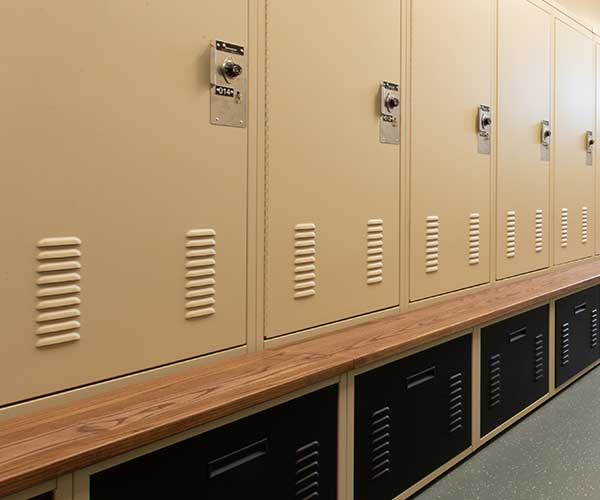
Police Records & Evidence Storage
Securely tracking and storing evidence and records are vital functions of any police department. The AHPD gained accreditation from the Commission on Accreditation for Law Enforcement Agencies (CALEA) in 2008 and followed strict procedures to maintain it during and after the move to the new building.
To help ensure that evidence and records are documented, transferred, and stored in compliance with CALEA-approved procedures, the department uses Spacesaver police evidence storage lockers and high density storage systems. High-density systems consist of shelving that moves along rails installed in the floor to optimize space and provide room to grow. These systems save space in the records room and the long-term evidence storage area.

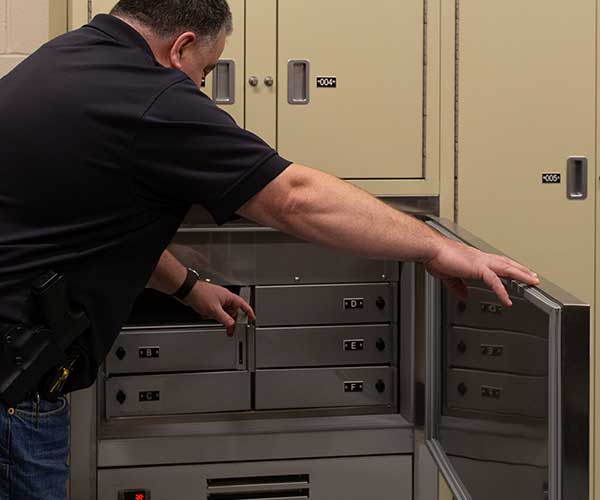
Biological evidence needs to be kept cold, and this half-height pass-through refrigerated evidence locker preserves evidence as it’s transferred from the collecting officer to the AHPD’s in-house evidence lab. Pass-through lockers allow officers to deposit evidence from one side of a wall, and then evidence technicians can access the evidence from the highly secure evidence processing area.

